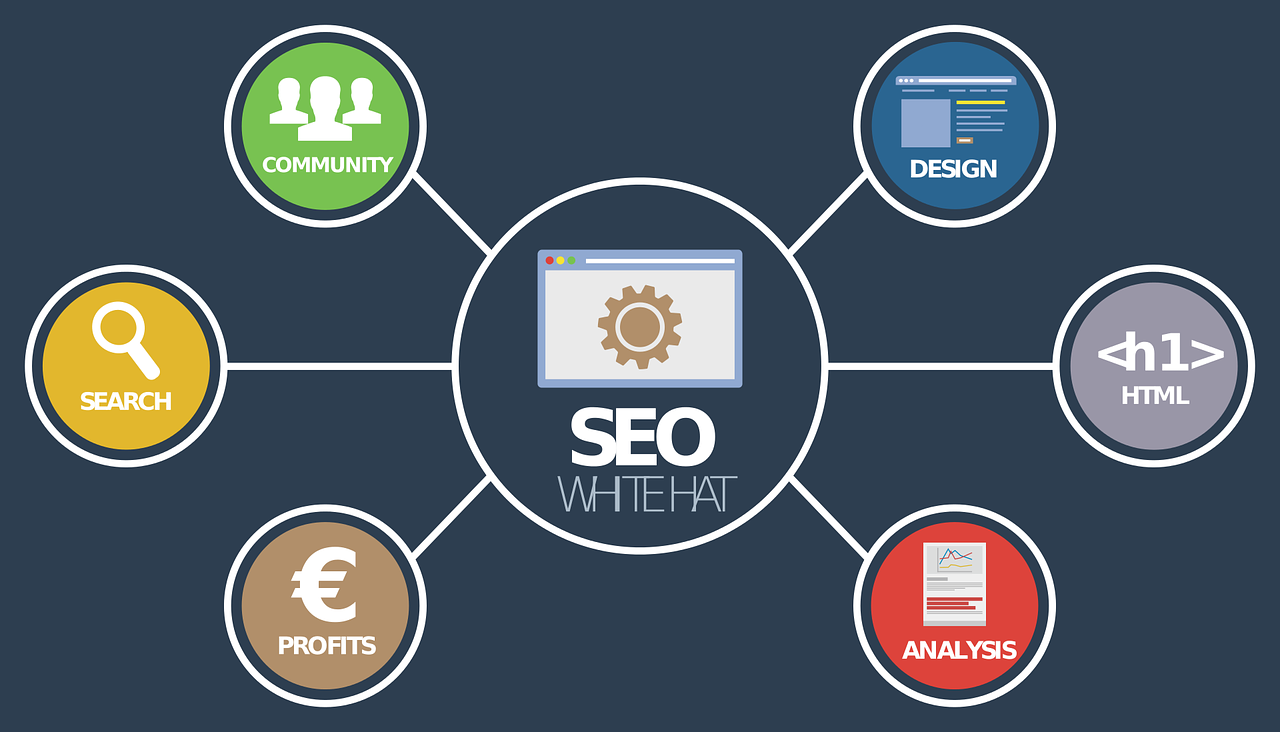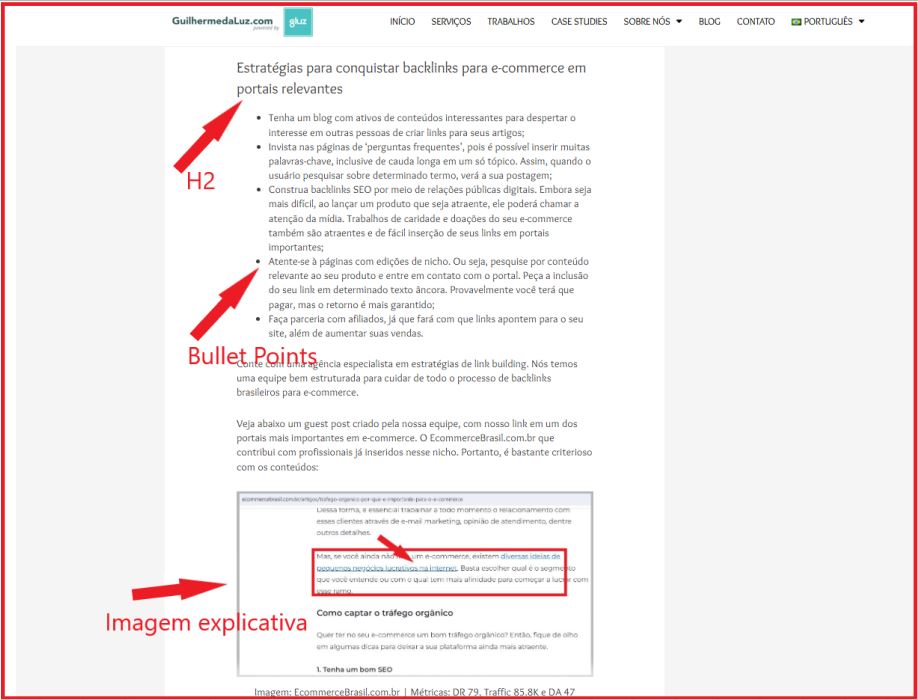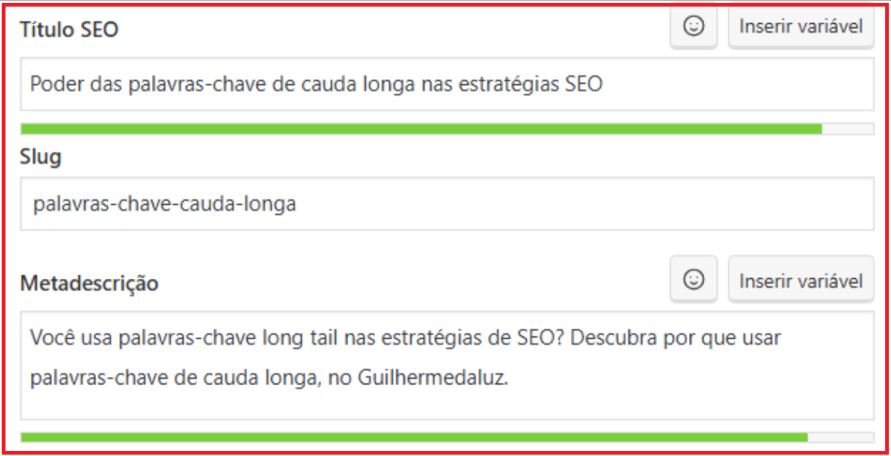
The key to a strategic online positioning is SEO Content. Discover how SEO Content Marketing can help your brand gain visibility.
Content marketing plays a fundamental role in a company’s digital presence, and its global projection is expected to reach US$ 94 billion by 2025. This reinforces the importance of digital strategies like SEO for companies seeking visibility and growth.
However, simply producing texts or visual materials is not enough. After all, it is essential that this content is optimized for SEO (Search Engine Optimization), which will ensure it is found by users on search engines.
Discover some of the strategies our SEO Content Marketing team applies.
Why is SEO content important?
Companies and freelancers aim to reach their target audience by solving problems and offering solutions through information. For this content to have a significant impact, it needs to be structured in a way that search engines can crawl, index, and display it in relevant results.
For example, imagine a user searches for “tips to improve blog SEO.” Google will present pages containing valuable information on this topic. So, if your content is well-optimized and of high quality, it has a better chance of appearing among the top results.
How to create effective SEO Content?
Producing SEO-optimized content involves a series of best practices necessary for ranking. Here are some essential strategies:
1. Relevant Keyword Research
Before writing, identify which keywords are most searched by your audience. You can use content marketing tools like Google Keyword Planner, Ahrefs, and SEMrush.
2. Content Structure
A good article should be divided clearly and organized, using headings (H1, H2, H3) and lists to improve readability. Additionally, include images to illustrate or explain parts of the content. Here’s an example of how we do it:
3. Quality of information
Well-written and in-depth content has a higher chance of ranking well. Focus on answering your reader’s questions and use external links that add more knowledge from reliable sources.
4. Appropriate length
Longer, detailed texts (over 900 words) tend to perform better in search engines. But avoid “padding” — it’s necessary to build valuable, informative content.
5. Call to Action (CTA)
Encourage user interaction, whether by leaving a comment, sharing the article, or downloading exclusive material. Besides helping users with more in-depth content, you can also collect data legally.
6. Use of images and videos
Multimedia content enriches the material and increases the time users spend on the page. Simply insert videos that provide additional information, tips, or illustrate how to do something.
Checklist for perfect SEO content
There are some key points to pay attention to when building perfect SEO content. To ensure your content is properly optimized, check the following:
1. Meta Titles and Meta Descriptions
Each page should have an attractive title and a relevant description. See an example, with the main and secondary keywords inserted into the meta description. Also note the importance of the keyword “SEO strategies”:
2. Strategic use of keywords
Keywords should appear naturally in the title, subheadings, and throughout the text. Use them strategically without overdoing it.
3. Friendly URLs
Avoid long URLs filled with numbers. Prefer short, descriptive URLs. Example:
- Correct: https://www.example.com/seo-guide/
- Incorrect: https://www.example.com/2025/02/25/seo/
4. Scannable, Proper Format
Use short sentences, lists, and highlighted sections to facilitate reading. About 43% of people only scan articles. Therefore, focus on headers (H1, H2), short paragraphs, bold and italics to emphasize key points.
5. Image Optimization
Images should have descriptive filenames and include alternative text (ALT).
6. Internal and External Linking
Insert links to other pages on your website and to reliable sources to reinforce the authority of your content.
Data and statistics about SEO content
According to a study posted by Wordstream, it’s important to pay attention to some statistics when creating SEO content. Among them:
- 53% of website traffic comes from organic searches.
- Businesses with blogs receive 55% more visitors.
- 61% of marketing professionals consider generating traffic and leads their biggest challenge.
- Content with more than 900 words tends to rank better on Google.
Important SEO statistics
According to the same study published on Wordstream, some statistics are crucial to understanding the power of SEO. Among them:
- Market size: The SEO industry is expected to reach nearly US$ 90 billion in 2024, up from US$ 75 billion in 2023.
- Impact of AI: 25% of companies are concerned about AI’s impact on website traffic.
How does SEO content impact ROI?
- Conversion rate: Leads from organic search have a conversion rate of nearly 15%.
- Lower cost: SEO reduces the need for investment in paid advertising.
- Long-term results: Unlike ads, SEO content continues to generate traffic for months or even years.
Return on Investment (ROI) in SEO
- Conversions: Leads from SEO have a conversion rate of nearly 15%.
- High-return marketing: 49% of companies consider organic search the strategy with the highest ROI.
- Monthly investments: Large companies may spend between US$ 10,000 and US$ 20,000 on SEO monthly, depending on their strategies. Small and medium-sized businesses typically invest an average of US$ 5,000 to US$ 10,000. Small local businesses tend to invest around US$ 1,000 to US$ 5,000 per month.
Trends and new strategies for SEO content
- Interactive content: Videos, quizzes, and infographics increase engagement.
- Voice search SEO: Direct questions and short answers favor this format.
- Personalization: Create content that meets specific audience needs.
The importance of being on the first page of Google
- Only 25% of users access the second page of Google. Therefore, your brand needs to be among the top positions.
- The first organic search result has an average CTR (click-through rate) of 31%.
- A good average CTR for organic results ranges between 3% and 5%.
Relevant trends and facts for your SEO Content Strategy
- Voice search: The average voice search result contains only 29 words.
- Local SEO: 46% of Google searches are about local products or services.
- Low search volume: 92% of keywords receive fewer than 10 searches per month.
- Quick conversion: 28% of local searches result in a purchase within 24 hours.
- Ranking factors: Google analyzes over 200 factors when ranking a site.
- Common mistakes: 25% of small business websites lack an H1 tag.
- Content impact: Companies with blogs have 434% more pages indexed.
- Lack of clicks: 50% of Google searches end without any clicks.
Therefore, digital success depends on a well-planned and SEO-optimized content strategy. So create rich, informative materials that follow best practices to ensure greater visibility, engagement and conversion.
And as you’ve seen above, SEO remains a vital strategy for ensuring that brands and companies are found in the digital environment. With the right techniques and a well-structured strategy, it is possible to increase visibility, generate more traffic and improve conversions.
So if you want to optimize your content, boost your results and gain prominence in search engines, count on our team of SEO experts to boost your results.


